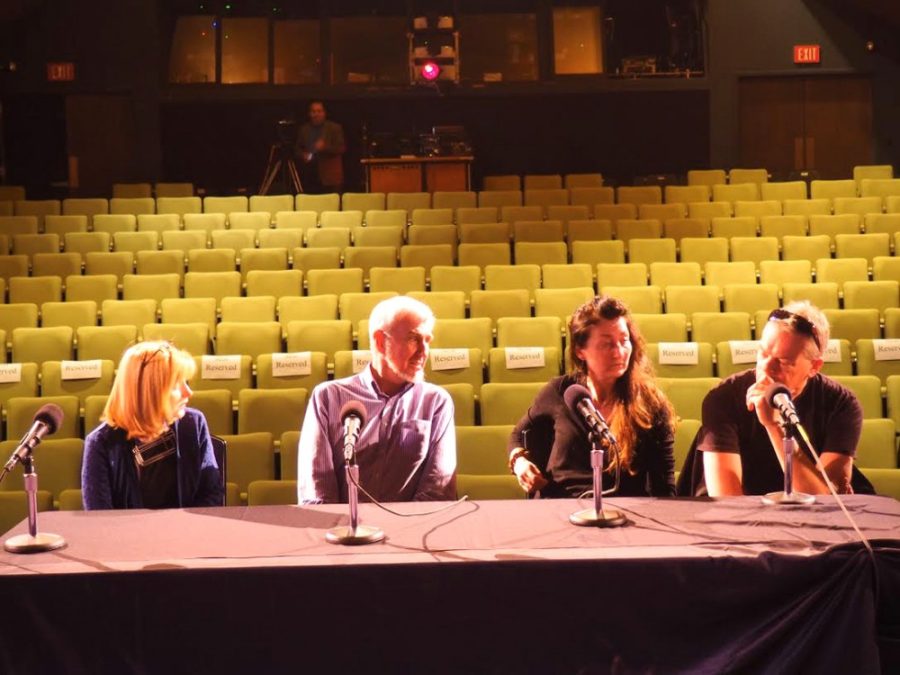The UA commemorated three milestones in brain science research with a visit from three Nobel laureates, John O’Keefe, Edvard Moser and May-Britt Moser, who all won the Nobel Prize in Physiology or Medicine 2014, and Eleanor Maguire, the winner of the Ig Nobel Prize for medicine in 2003 — a prize given to improbable research that captures public attention.
These distinguished guests came to help celebrate the 25th anniversary of the UA Arizona Research Laboratories Division of Neural Systems, Memory and Aging, the 10th anniversary of the Evelyn F. McKnight Brain Institute at the UA and the fifth anniversary of the School of Mind, Brain and Behavior. Before their open forum on last Thursday, they met with the press for a Q&A session.
Daily Wildcat: Will we be able to find a “cure” for Alzheimer’s disease or is it going to be more like cancer, where there are many treatments rather than one cure?
John O’Keefe: Very much like cancer, one of the big problems is that it spreads. The idea now is that it starts in very special areas such as the entorhinal cortex but then spreads, and maybe the spread is what one needs to target and stop it from spreading. That might be an easier target to go for than preventing it in the first place.
Edvard Moser: It looks like some cells in the entorhinal cortex are for some reason particularly vulnerable, and I think we’re on the track of finding out why these cells are vulnerable. Once we know that, that’s an important step in slowing down and possibly preventing this disorder.
May-Britt Moser: There are two very early symptoms of Alzheimer’s. One is that they can’t find their way, and one is that they can’t distinguish odors. We know what part of the entorhinal cortex is dealing with odors, which is the structure John was talking about, … and giving that information to the hippocampus. My earrings are seahorses and those are hippocampuses — that’s the structure we all started in before we went on to the abstract structures -— and you need this structure to remember what you had for breakfast.
Eleanor Maguire: There’s another issue here which is that [the] brain functions as a system. The hippocampus and these grid cells, they aren’t just islands. We know from work in humans and rats if the hippocampus is damaged, [then] other parts of the system that aren’t damaged but communicate with the hippocampus also start to malfunction. Information flow has been disrupted and that can amplify the difficulty that these patients have.
Daily Wildcat: Is it generally accepted that the brain is plastic now, and what does that mean for people?
Maguire: There is agreement that new neurons are born in the hippocampus now. Cortically, there is still uncertainty about whether that happens. If you were to pick all the parts of the brain, it must be very significant that the [two places] new neurons are generated are the hippocampus and olfactory bulbs.
Edvard Moser: All the learning that happens throughout our lives, every day, all the time, that’s plasticity in the brain. It goes on everywhere in the brain all the time. That doesn’t mean genetic factors don’t have a strong role. I think no one would claim today that plasticity isn’t an important part of the brain activity.
Maguire: Plasticity is a term people think of as the structure just getting bigger or smaller but, as Edvard says, every synapse can change moment to moment, and that’s a form of plasticity as well.
Arizona Daily Star: When you come here to the UA, can you learn something?
May-Britt Moser: Edvard and I were still students when we started to read their work. When we did our master’s thesis, we [understood] that Lynn Nadel had already done it. We started to read beautiful papers about aging in rats by this “C.A. Barnes”, and we wondered who this was. Then we met her and it was a “she” and that was exciting.
Edvard Moser: I would say that much of [the] work we got the prize for and the whole development of systems neuroscience, much of it has happened here in Tucson. It’s easy to take it for granted now, but there were major breakthroughs that sort of established the whole field.
Maguire: First we went to John to learn 16 channels, then we came here to learn to record hundreds of channels. As Carol [Barnes] said, Lynn and John’s book was extremely important for us.
O’Keefe: The answer to your question is yes, this is one of the centers of neuroscience, particularly hippocampal neuroscience. So we learn a lot when we come here. Both in terms of the work done at the single cell level in rats [and] in terms of imaging studies. It’s a great place.
_______________
Follow Amy Nippert and Julie Huynh on Twitter.



